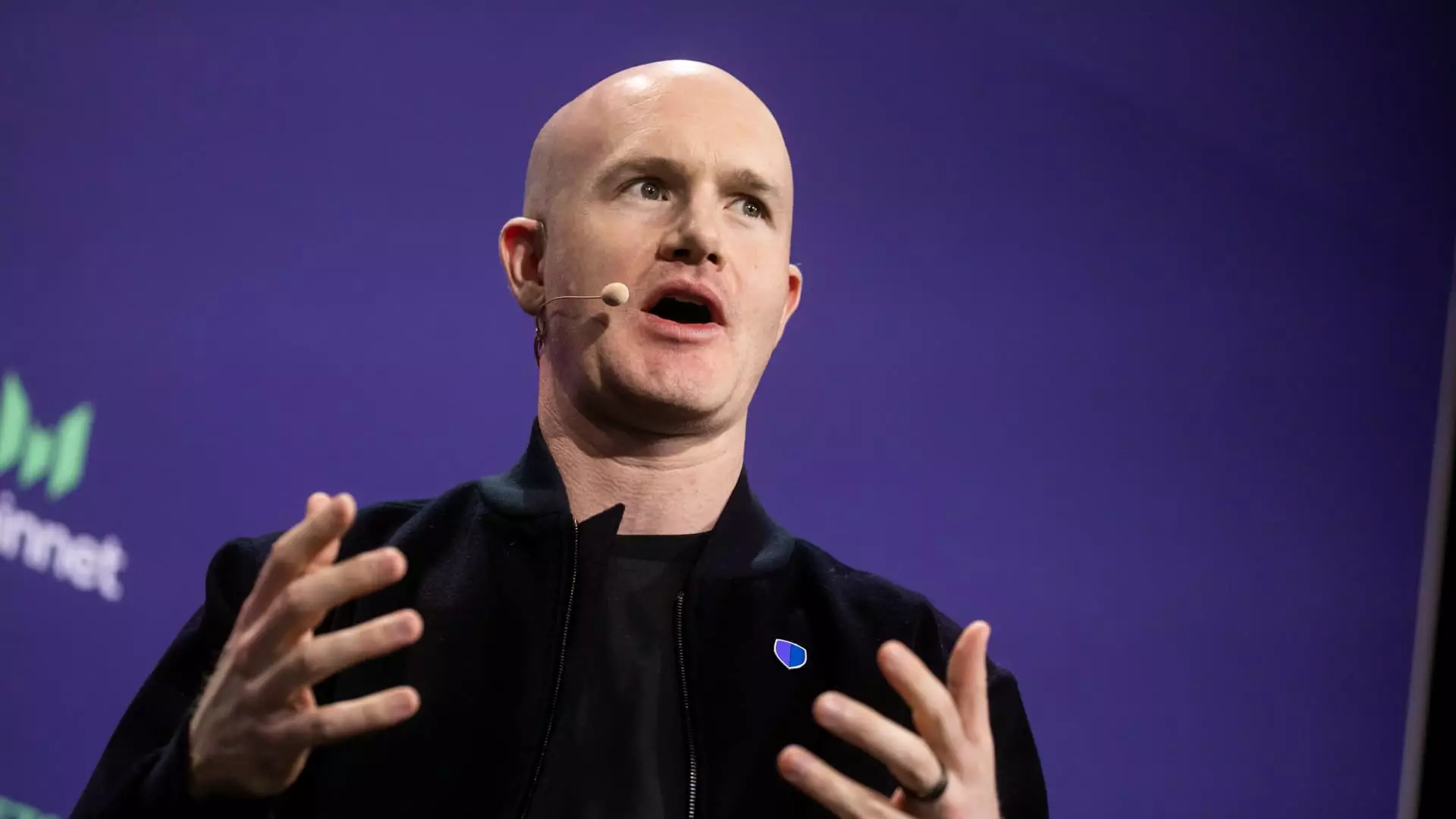In an era marked by rapid technological evolution, Brian Armstrong, the CEO of Coinbase, is not simply reshaping the narrative around cryptocurrencies; he is audaciously redefining the very fabric of financial services. During a recent earnings call, Armstrong laid out a vision that is not just ambitious but starkly revolutionary: within the next five to ten years, he intends for Coinbase to transcend its status as a mere cryptocurrency exchange and emerge as the premier financial services platform globally. The implication of this ambition is monumental, suggesting that crypto is no longer a fledgling industry but an impending dominion that is inexorably integrating into the mainstream financial framework.
Armstrong’s remarks reflect a fundamental belief that “crypto is eating financial services.” This statement, although provocative, encapsulates a potent truth that cannot be overlooked. As traditional financial institutions gradually turn toward cryptocurrencies—exemplified by increasing partnerships with firms like BlackRock, Stripe, and PayPal—Coinbase stands at the precipice of an imminent revolution. The recent regulatory shifts, including the easing of restrictions by U.S. financial authorities, hint at a regulatory climate that is beginning to embrace, rather than shun, the burgeoning crypto landscape.
A Forward-Thinking Approach in a Traditional Landscape
One of the most enlightening aspects of Armstrong’s vision lies in his insistence on a forward-thinking approach. He articulated a desire to “skate to where the opportunity is going,” opposing a backward glance. This mentality is not merely visionary; it’s imperative in a world where financial models are steadily evolving. By prioritizing innovation and anticipating future trends, Coinbase aims to ensure it remains relevant and influential as traditional players increasingly adopt crypto-based solutions.
Armstrong’s focus includes broadening their services beyond trading into a more comprehensive financial model. This pivot reflects a keen understanding of where consumer demands are heading. Today’s consumers—whether they are retail buyers, SMBs, institutions, or developers—are looking for financial solutions that are efficient, instant, and integrative. For Coinbase, the next logical step is to deepen its offerings in areas not limited to trading but extending into payments, custodial services, and stablecoins. This adaptability is what will enable Coinbase not to merely ride the wave of financial change but to guide it.
Stablecoins: The Backbone of Coinbase’s Future
Stablecoins emerge as a crucial cornerstone of this bold vision. Armstrong hasn’t shied away from discussing the soaring revenue tied to stablecoins, which has surged significantly year-over-year. The strategic partnership with Circle to co-found the popular USDC stablecoin positions Coinbase to capitalize on this growing sector, enhancing its credibility and market share. Interestingly, Armstrong stated a keen ambition to make USDC the number one stablecoin in the world, overtaking its primary competitor, Tether’s USDT.
The perspective that stablecoins will represent a significant share of revenue is not without merit. Their inherent utility and demand among financial institutions seeking a reliable medium for transactions make them a logical choice for banks looking to embed themselves in the crypto ecosystem. However, Armstrong warns against the pitfalls of fragmented stablecoins created by independent banks, advocating instead for interoperability that enhances network effects. This stance showcases a strategic mindset focused not only on growth but also on the efficiency and functionality of financial systems in the coming years.
The Inevitable Integration of Crypto and Traditional Institutions
Armstrong’s beliefs about the inevitable integration of cryptocurrencies into mainstream banking are particularly resonant. He confidently asserts that every major bank will eventually incorporate crypto solutions into their offerings—an assertion that aligns with recent trends of traditional finance players warming to the idea of engaging with digital currencies. As seen from Bank of America’s tentative steps towards stablecoin development, the reluctance of yesteryears seems to be fading.
But here’s the catch: this integration is not just about technology; it’s about cultural acceptance. The banks must not only adopt technology but also evolve their business models and customer service paradigms to accommodate this shift. There will be inherent challenges, of course, including regulatory hurdles and the need for robust risk management. However, with leaders like Armstrong at the helm, creating pathways for integration seems not just possible but likely.
Coinbase’s journey under Brian Armstrong is nearly emblematic of the crypto industry’s transition from the periphery to the center stage of global finance. Each step taken is not merely a business strategy but a belief in a future where financial services are inexorably intertwined with cryptocurrency. The road ahead may be fraught with obstacles, but with entrepreneurial foresight and a willingness to innovate, Coinbase appears poised to spearhead this transformation.


Leave a Reply